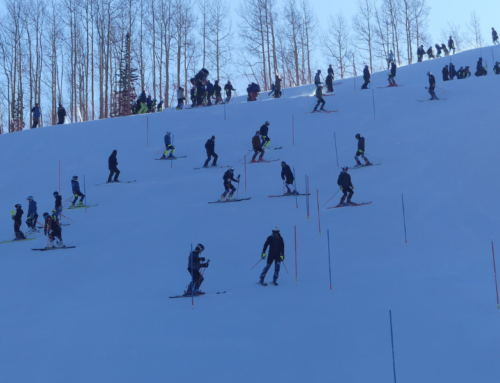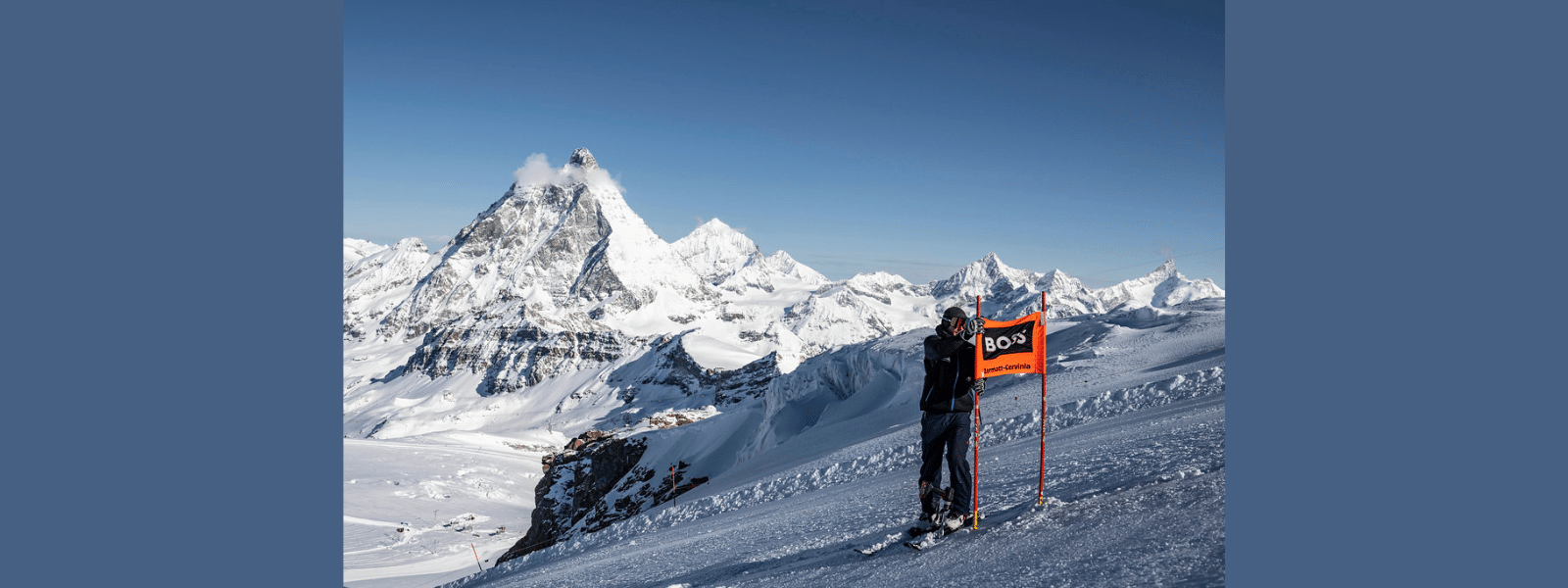USSA gets enthusiastic turnout for renewal of Junior II national championships
USSA gets enthusiastic turnout for renewal of Junior II national championships{mosimage}A national championship for 15 and 16 year olds had been a hotly debated topic around the country ever since USSA alpine director Jesse Hunt introduced the concept last spring. But a consensus was soon reached; the J II Nationals were added to the calendar. And on March 5-11, Hunt’s vision was realized at Whiteface Mountain, New York.
If there were any doubts about the new format, they were quickly extinguished by the enthusiastic turnout of the nation’s best J IIs, who were eager to represent their regions, take a shot at an age-group medal, and perhaps earn a trip to Europe for the upcoming national development project.
“It was our goal to go from a model of regional championships to national championships,” said Hunt. “It’s been a huge success as far as a motivator for regional athletes and coaches. It’s been nice to mix it up with greater intensity the result.”
Doug Williams, program director of NYSEF, the host of the series, added, “I was skeptical initially, but it was a great event. It brought something to the table for the J IIs. They weren’t going for the points, they were going for the win and that doesn’t happen enough in ski racing.”
Taking a different slant was Noel Dufty, head coach at Heavenly Resort in California. “Basically kids hanging around kids was the best thing. They’re building friendships besides competing, and they’re loving it. It’s good stuff,” said Dufty.
The East may have dominated the winners’ circle, taking six of eight races, but all the regions were well represented on the podium and on the first page of results. But regardless of results, the J II Nationals was a grand adventure for all competitors, and perhaps a look at the future of the U.S. Ski Team.
With any trip to the East in March, racers know enough expect the unexpected in terms of weather. Junior III racers endured a deep-freeze on their visit to Whiteface Mountain in January for their national camp and races, but things were decidedly different this time around. ORDA director of communications Sandy Caligore noted, “The good news was that the conditions were excellent spring skiing; the bad news was that the conditions were excellent spring skiing.” He even added a bit of “you should have been here yesterday” in reference to the unending series of sunny days prior to the competition. But the end result for the opening slalom on March 5 was rain, soft snow and decidedly difficult conditions.
But to have climbed this far up the ladder, these racers have learned how to make the best of any situation. After all, someone has to win the race, regardless of conditions. Courtney Carmichael, 16, who skis out of Sugar Bowl, California, didn’t dwell on the negative. “It was raining and you couldn’t see very much, and the snow was soft, but they salted and it held up pretty well,” said Carmichael who finished third. She was joined on the podium by her Western teammates, race winner Courtney Hammond from Rowmark Academy in Salt Lake City and silver medalist Brandy Barna, also from Sugar Bowl. “To sweep the slalom was really fun,” said Carmichael. “We decided to wear cowboy hats at the awards ceremony.”
Conditions weren’t any better for the men. Jonathon Hunter, who hails from Vernon, New Jersey, and attends the Stratton Mountain School, also gave things a positive spin. “It wasn’t too bad. Foggy and pouring at times, but not too bad,” said Hunter, who had set his sights on this race and wasn’t about to let minor inconveniences, such as the weather, get in his way. “I’ve been hoping to win the slalom here since the beginning of the year,” said Hunter. “It was definitely awesome to win.”
Hunter found himself in second after the first run, but again found the sunny side of the situation. “I thought I’d rather be the chaser than the chased,” said Hunter, who calmly watched racer after racer DNF on the final pitch. “Something you don’t want to see,” said Hunter, who then proceeded to put down the fastest second run to take the win. First run winner, Austin Johnson from the Quantum Sports Club in Colorado hung onto second, while Alpine Meadows racer, Kevin Yolken took third.
At least it wasn’t raining for the giant slalom races the following day, but it was still warm and the courses required heavy doses of salt to firm them up. “It was difficult. The salt froze in all the little bumps and it was nasty,” remarked Carmichael. “That first run was a killer. It was hard to keep your composure.” Women’s race winner, Lyndee Janowiak, a Central racer who now skis for Quantum, had no trouble with composure; it was Park City phenomena Megan McJames who provided the biggest obstacle. McJames, who entered the event with the lowest GS points in the field, had taken the first run lead, but she faltered just enough in the second run for Janowiak to take the win. Local NYSEF racer Kelly Taylor claimed the bronze.
Eastern Regional Coach, Peter Stokloza was impressed with the depth of skiing represented at the event. “The technical level across the board was high. There was some great skiing and the level just didn’t drop off,” said Stokloza. That point was well taken in the men’s GS. Will Brandenburg from Schweitzer Mountain, Idaho won the painfully turny first run from a start of 29; first year II Kamden Burke from the Gould/Sunday River program in Maine came from a start of 59 to fourth overall; and Brian Morgan, skiing for Burke Mountain Academy, started the race dead last (73) and worked his way up to ninth overall.
But it was a second run blitz on a course over 10 seconds faster than the first that brought victory to Holderness School’s Willy Ford. Only 12th after the first run, Ford nailed the second run to edge out Jonathon Hunter by 0.08 seconds. Brandenburg rounded out the podium with a third. “Second in GS is a bigger surprise than winning the slalom,” said Hunter. “It was kind of a soft granular that peeled away, but Willy (Ford) had a great second run, great for all the Eastern guys.”
More hoopla followed that evening in the form of a banquet, awards, and slide show of the past two days of races. “I’m pretty impressed, I’ve never had fireworks in my honor before,” said Carmichael of the festivities. “It’s pretty neat. I’ve been to Whistler (the Whistler Cup) and lots of big races, but I’ve never had this kind of welcome.”
With speed races next on the schedule, the inevitable occurred — snow. Not much snow, but enough to push the opening super G back to the next day, while racers, coaches, and organizers worked on the hill. But the rescheduled race day wasn’t much better due to a thick layer of fog clinging to the upper part of the mountain. After numerous delays, the super G race finally got underway with the women running from a lower start.
Kelly Taylor, representing the local National Sports Academy and NYSEF, used her local knowledge to put down the fastest run of the day with a time of 1.04.41. She was followed by Laura Littman from Vail and Megan McJames.
Doug Williams couldn’t have been more proud. “She’s an awesome kid, always smiling,” said Williams. “She’s good in GS and then you throw fearless into the mix and you’ve got a speed skier.”
With daylight fading the men’s super G was carried over to the next day, creating a tight schedule. “We ran the men’s super G race and then got in two runs of downhill training for both the men and women — that was a challenge,” said Williams.
The morning of the super G race, NYSEF racer Robert Miller proclaimed to Williams that he was winning the race today. Williams glanced down at his bib number 52, and thought to himself, “I don’t think so.” But Miller proved him wrong. Running just a few from the end, Miller roared past race leader Jonathon Hunter to take the win by over a second. Hunter ascended his third podium of the series in second, and GMVS student, Masura Nakamura took the bronze. NYSEF skiers, Brendan Brousseau and Ethan Weibrecht followed in the next two places in an effort to
debunk any myths about any lack of prowess in speed in the East.
For the final downhill race of the series, racers and coaches couldn’t believe their good fortune. It was sunny and cold, and the track was fast. With the women first to go, once again it was NYSEF’s Kelly Taylor who found the fastest way down with a time of 1.21.10. In a tight race she nipped McJames by .18- seconds and Mt. Washington Valley’s Leanne Smith by .47.
Mark Mikos from Waterville Valley, New Hampshire, dominated the men’s field, leaving Squaw Valley’s Travis Ganong and Will Brandenburg in his wake. “Boy, did he ski well,” noted Williams. “On every section, he just nailed it.”
Following the awards ceremony, which saw Courtney Hammond and Brandenburg crowned combined champions, racers packed their bags and headed home. Courtney Carmichael could have been speaking on behalf of the entire field when she said, “It’s been great racing against the best IIs in the country — a lot better than the old JOs. It’s been fun racing and fun to represent our region. It feels really great to be a part of this.”





















